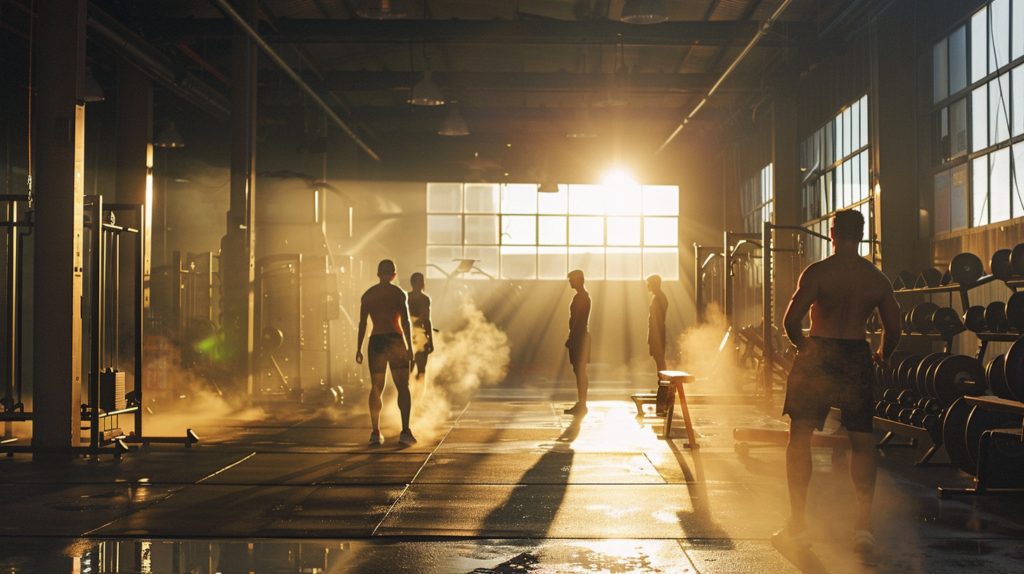Heat has a profound impact on your workout performance, affecting muscle efficacy and increasing fatigue levels. Elevated temperatures lead to quicker muscle glycogen depletion and diminished blood flow, hindering your ability to perform. Strenuous exercise in hot conditions raises the risk of dehydration and heat exhaustion, symptoms of which include cramps and confusion. To combat these effects, implementing effective hydration strategies, appropriate clothing, and strategic breaks is essential. Gradual acclimatization and mindfulness of your body’s signals can help maximize performance. Understanding these hidden impacts can profoundly enhance your workout results and overall safety in training.
Key Takeaways
- Elevated temperatures accelerate muscle glycogen depletion, leading to quicker fatigue during workouts.
- Increased core temperatures result in reduced muscle blood flow, diminishing overall performance.
- Strenuous exercise in heat raises the risk of heat exhaustion, with symptoms such as cramps and confusion.
- Effective hydration strategies are crucial, as dehydration can severely impair performance and health.
- Gradual acclimatization to heat improves thermoregulation, enhancing workout efficiency and safety.
Physiological Effects of Heat

The physiological effects of heat on exercise performance can greatly impact athletes and fitness enthusiasts alike, with research indicating that elevated temperatures lead to increased muscle glycogen depletion rates.
As core temperatures rise, muscle blood flow decreases, resulting in diminished performance and increased fatigue. To combat these challenges, effective hydration strategies are vital; maintaining fluid balance helps sustain energy levels and optimize performance.
Additionally, employing thermoregulation methods—such as wearing appropriate clothing and taking breaks in shaded areas—can enhance your body’s ability to cool itself.
Risks of Training in Heat

Training in heat presents significant risks that every athlete and fitness enthusiast should acknowledge. Engaging in strenuous workouts under high temperatures can lead to heat exhaustion, characterized by symptoms such as cramps, nausea, and confusion.
The body’s inability to cool itself effectively increases the likelihood of dehydration, especially in humid conditions. This not only hampers performance but can also have long-term health consequences.
To combat these risks, implementing effective hydration strategies is essential; athletes must drink water consistently before, during, and after exercise.
Understanding these dangers empowers individuals to make informed decisions about their training routines, ensuring they pursue their fitness goals safely and effectively.
Heat Adaptation Strategies

Gradually acclimating to heat is essential for optimizing performance and enhancing overall workout effectiveness. Implementing heat acclimatization techniques over one to two weeks can considerably improve your body’s ability to regulate temperature during exercise.
Start with lower exercise intensity adjustments, aiming for 60-90 minutes of activity each day, gradually increasing intensity as your body adapts. This approach not only enhances thermoregulation but also fosters a more resilient mindset.
Embrace the challenge of training in heat, as each session brings you closer to liberation from environmental constraints. By matching your training environment to expected conditions, you empower yourself to conquer workouts, even in the sweltering sun.
Adapt and thrive—your body will thank you for it!
Preparation for Hot Weather

Preparing for workouts in hot weather requires strategic planning and awareness to guarantee safety and maintain performance levels. Effective hydration tactics and appropriate clothing choices are essential components of your preparation strategy.
| Hydration Tactics | Clothing Choices |
|---|---|
| Drink water frequently | Opt for light-colored fabrics |
| Use electrolyte drinks | Choose moisture-wicking materials |
| Schedule breaks to hydrate | Wear breathable, loose-fitting attire |
| Monitor thirst levels | Incorporate sun protection (hats, sunscreen) |
Mindfulness During Heat Training

Mindfulness during heat training is essential for optimizing performance while ensuring safety in challenging conditions.
Athletes must adopt effective hydration strategies, drinking water regularly to counteract fluid loss. Shorter training sessions are advisable in high temperatures, allowing for a gradual increase in training intensity as the body acclimatizes.
Pay close attention to physiological cues, such as thirst and fatigue, to prevent overheating and dehydration. Adjusting training plans based on environmental conditions promotes not only safety but also enhances overall performance.
By prioritizing well-being over mere output, athletes can navigate the heat with a liberated mindset, harnessing their inner strength while respecting their bodies’ limits.
Embrace the challenge, stay mindful, and thrive in your heat training endeavors.
Frequently Asked Questions
How Does Humidity Affect My Workout Performance in Heat?
Humidity effects notably influence performance metrics by increasing perceived exertion and accelerating dehydration. This environment can hinder thermoregulation, leading to fatigue. Prioritize hydration and adapt training strategies to combat humidity for ideal performance and well-being.
What Signs Indicate I’m Overheating During Exercise?
As the body battles the relentless sun, overheating symptoms emerge—dizziness, excessive sweating, and nausea. Recognize these signs of heat exhaustion to liberate yourself from potential harm, ensuring your training remains both safe and effective.
Can I Train Effectively in High Heat Without Acclimatization?
Training effectively in high heat without acclimatization is challenging. Heat adaptation is essential for optimizing workout intensity and performance. Gradually exposing yourself to heat enhances your body’s ability to regulate temperature, ensuring safer and more effective training sessions.
What Are the Best Cooling Strategies During Intense Heat Workouts?
When the heat is on, employing effective cooling strategies is crucial. Utilize hydration techniques and cooling gear, such as ice vests and electrolyte drinks, to maintain peak performance and guarantee your training remains invigorating and safe.
How Does Heat Training Impact Recovery Times Post-Exercise?
Heat training can markedly extend recovery times post-exercise due to increased physiological stress. Implementing effective recovery strategies alongside heat acclimatization facilitates adaptation, enhancing overall performance while ensuring the body can recuperate efficiently in demanding conditions.
Conclusion
To summarize, the influence of heat on athletic performance is profound and multifaceted. A staggering 30% decrease in exercise capacity has been documented in extreme heat conditions, underscoring the critical need for heat adaptation strategies. By implementing gradual acclimatization and effective hydration practices, athletes can greatly enhance performance and reduce the risk of heat-related illnesses. Prioritizing safety and employing mindful training techniques will empower athletes to harness their full potential, even in challenging environmental conditions.













